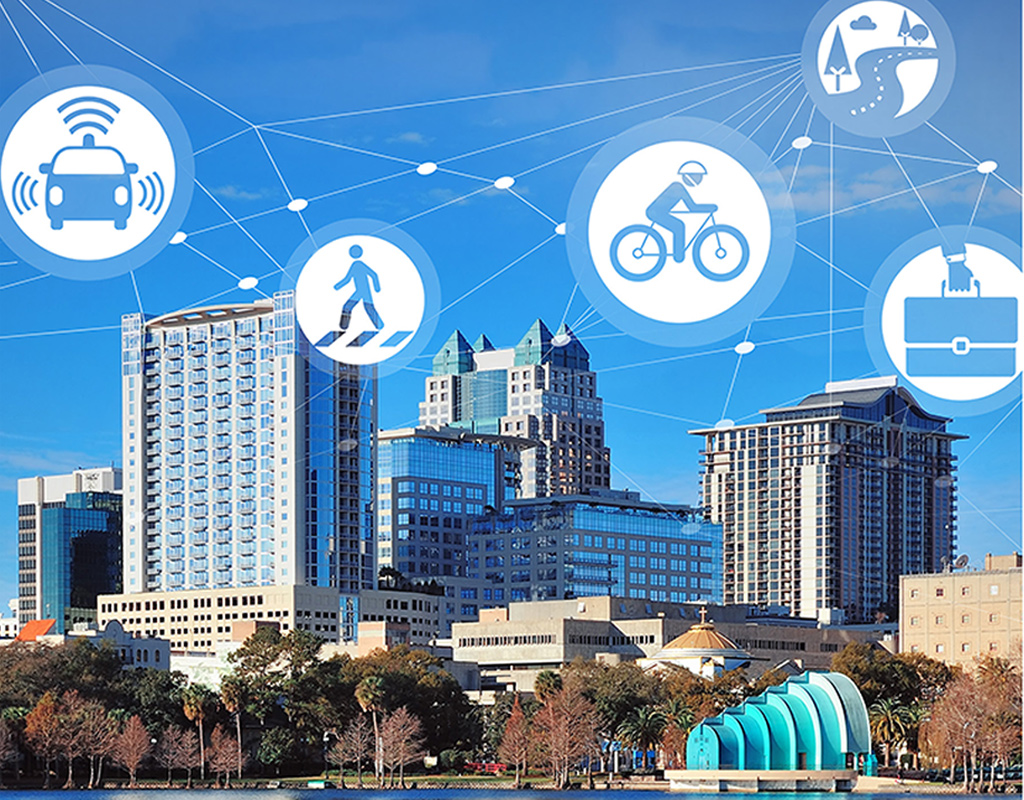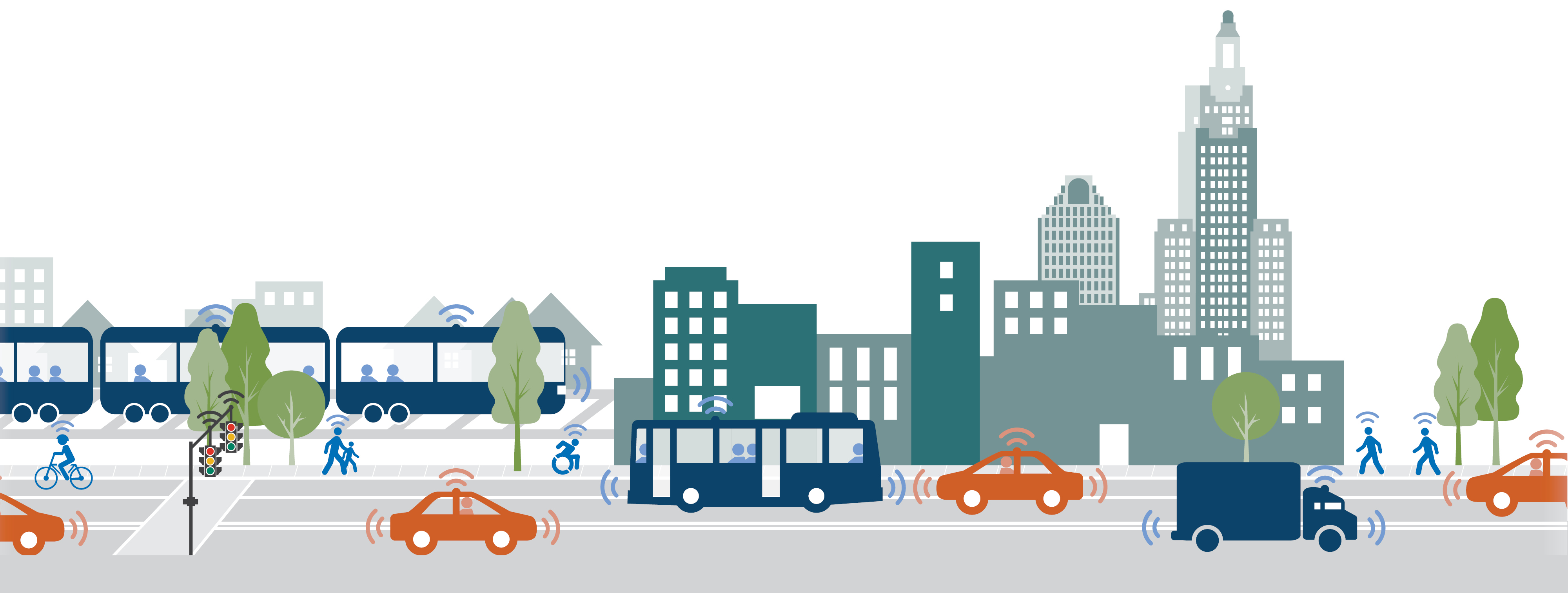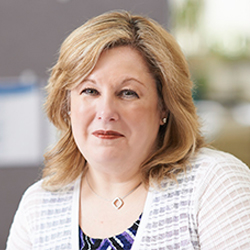In the 18th, 19th, and early 20th Centuries, horse-drawn carriages dominated as a preferred transportation mode. The paving of roads and use of gas or steam to power automobiles in the early 1900s provided new opportunity and choices for transport. Cars and horses shared the roads for decades, but by the 1950s, under the Eisenhower Administration and the birth of the Interstate Highway System, the automobile grew in popularity. With the introduction of autonomous vehicles (AVs), America’s transportation options are evolving yet again.
As the industry inches closer to full implementation, questions and concerns regarding the effects of this technology—both deliberate and unintentional—include:
- Will parking facilities as we currently know them be a necessity? What will be done with parking lots and garages if they are no longer needed?
- What effect will AVs have on other modes of transportation, such as transit?
- How will AVs impact societal and economic issues, including accessibility for all?
Parking Facilities Transformed
As automobiles became the preferred mode of transportation in the United States, the necessity for parking lots and garages grew such that our communities are now plagued with seas of asphalt and concrete. With the rising prevalence of AVs, it is predicted that shared ridership will increase, and the number of individual vehicles owned will decline. Imagine a world where driverless vehicles pick-up and drop-off different passengers at different locations. Imagine how many fewer parking spaces would be required in residential communities, at workplaces, retail, and entertainment venues. And, then imagine the possibilities for how and where we can use/reuse parking lots and garages.
With the evolution of transportation technology, as well as continued reinvention of retail space, existing parking facilities could be transformed into mixed-use developments, affordable housing, or parks—the opportunities are endless. Both urban and suburban populations desire easily accessible amenities, such as restaurants, shops, entertainment venues, and green spaces. Up-and-coming “surban” neighborhoods—suburban areas with the feel of an urban environment—offer a combination of both. The growing wish list of public amenities could affect how policy makers craft zoning laws for future use, with impacts of AVs playing a significant role.
Is Public Transportation Taking a Back Seat?
Due to a backlog of needed costly infrastructure improvements and upgrades—and funding challenges faced by most transportation agencies—transit and subway use is declining in some urban areas. While full implementation of AVs is still years away, anticipated benefits associated with evolving technology could compete with other modes of travel. If implemented correctly, the advantages resulting from widespread deployment of AVs could include:
- Elimination of first- and last-mile challenges. While transit options provide some convenience, they often do not take users from door-to-door. Needing to walk or drive from transit stations and bus stops to office and home locations is a common activity for public transportation users. AVs will provide point-to-point service.
- Increased mobility for all. The option of traveling via AVs opens a world of opportunity for the youth, the elderly, and the disabled who may not otherwise be able to drive.
- Decreased wait times. Public transportation users are dependent on schedules and must plan accordingly. Any delays can affect getting to work promptly, arriving home in time to meet the school bus, or making it to the theatre for the first act of a play.
While these advantages make AVs an attractive option—and one many travelers are excited for—we must also consider the detractors associated with any mode of transportation. The addition of AVs on the road could lead to increased traffic congestion and environmental impacts that we have yet to discover.
Community Impacts
Picture being able to take a road trip when in your nineties, in your own car, without the cost of hiring a driver, or the headache of mapping your route. Implementation of AVs opens a whole new world of opportunity for the elderly and disabled, creating connections and mobility they may not otherwise receive.
On the flip side, not everyone will be able to own an AV, just like not everyone can afford an iPhone X, or an 80-inch television, or a trip to Disney World. Will this new technology create an even bigger disparity between the “haves” and “have nots”? Is ownership necessary to reap the benefits of AVs
Car- and ride-sharing has grown in popularity during the past decade. Zipcars, Uber, and Lyft offer user benefits that include convenience, cost savings, and less congestion and environmental impacts. Shared AVs could provide similar benefits; however, this prospect currently raises myriad questions, including:
- If no individual vehicle ownership exists, who pays for the vehicle? Is it the public sector and does it supplement or replace transit as we know it?
- Who is responsible for maintaining the vehicle?
- How is the vehicle insured?
- Who is held accountable in the event of an accident?
As technology continues to evolve at a rapid pace, it will be a major driver in land use development, including shared-use options and multimodal alternatives. Collaboration among owners, developers, architects, designers, and constructors is critical to delivering smart projects and creating connected cities as we continue to reshape and reimagine our world.

VHB’s professionals are passionate about making meaningful contributions to our communities through the work that we do. We’re a team eager to deliver value by embracing our clients’ goals, anticipating challenges, building lasting partnerships, and always providing a smooth ride. Client partners we are already helping as they plan for land use reinvention include:
- Providing sustainability, transportation, and parking services related to Smart City efforts, including working with USDOT as part of the Smart Cities Challenge to leverage technology to aid cities in making smart policy decisions on urban development
- Assisting the City of Orlando with identification and implementation of smart mobility concepts, including energy efficiencies such as LED street lights, alternative fuels, and solar-generating parking garages
- Partnering with Georgia DOT on research and development to address autonomous and connected vehicles technologies, changing ownership trends and driving patterns, and potential strategies to “future-proof” recommended improvements to the Downtown Connector in Atlanta
- Working with the Central Florida Autonomous Vehicle Partnership to conduct pilot proving ground testing for autonomous freight and autonomous shuttles
- Evaluating AV shuttle service and multimodal bus lanes as part of the Mt. Vernon Highway Transit Feasibility Study for the City of Sandy Springs, Georgia
- Developing a comprehensive and data driven transportation plan for the South Boston Waterfront District, including multimodal transportation enhancements that will support recent and planned development of the Waterfront over the next 20 years
- Long-range transportation planning for the Rhode Island DOT, including
development of CAV scenarios - Developing Autonomous Transit Justification Reports, including for the
City of Orlando
How Can VHB Help
VHB’s understanding of transportation, technology, and land use makes us uniquely qualified to provide clients with guidance as they navigate this quickly changing environment. Contact Terri Elkowitz to learn more about our integrated service solution approach that keeps us in front of technological and regulatory changes in the public realm while consistently considering the impact those changes will have on private client assets. Our goal hasn’t changed. We always want to assist in positioning our client’s property for its highest and best use; however, the skills and knowledge needed to deliver on that goal are changing—and VHB is leading the way.



